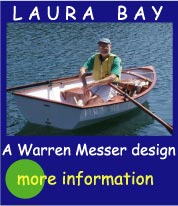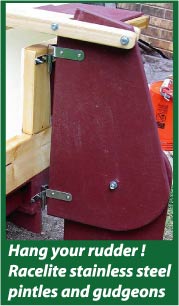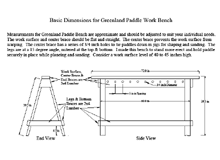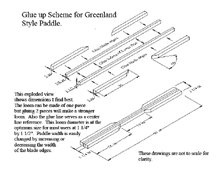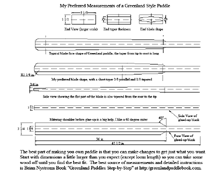Kayaks or "Hunting Boats" have made from found and harvested materials and were used for about 4000 years. A kayak was made for a particular paddler using "anthropometrics" to determine the length, width and depth of the boat. Greenland kayaks were generally 3 arm-spans (fathoms) long, the width of hips plus 2 fists wide and a fist with outstretched thumb deep behind the cockpit. On average, today, such a kayak would be about 17 feet long, 20 inches wide and 7 inches deep behind the cockpit.
Greenland Paddles (GP) are also made to measurements of the individual paddler and their kayak. After making half a dozen paddles, I found what works best for me. A length of 91 inches with blades of 3 to 3.25 inch width and a loom of 19 inches long with a 1.25 by 1.5 inch oval are my basic dimensions. I am not trying to make an authentic replica of a specific GP, I am making Greenland style paddles. I have not written a step by step tutorial, for that I suggest Brian Nystrom's book Greenland Paddles Step by Step which is the best DIY book I have found. There are also dozens of different instructions and videos online. The QAJAQ USA website is a perfect place to start, pay attention to the "Common Mistakes" section.
I want to share some things I have learned along the way. The work bench I use is simply an overgrown saw horse but it saves my tired-old back. I purchased the wood at Home Depot for 70% off in the Scrap Ben.
Basic Steps for Building a GP
1. I usually look through about 100 Western Red Cedar (WRC) 2x6 by 8 foot boards to find a single usable one. My experience shows 2X6 boards are cut from much larger trees than 2X4s and generally produce better grain and fewer knots. You are looking for boards with quarter sawn grain
(see Grain Orientation Detail illustration) with no run-out and no knots in the "usable area". My approach requires lots of rip cuts into long skinny pieces that are glued-up into blanks. I use only Gorilla Glue, the brown stuff. It requires lots of clamps but dries in less than 2 hours and make an excellent waterproof bond. I soaked a cut off end part of a paddle with 4 layers and 3 glue joints in water for several days and the glue joint was stronger than the wood. The piece I soak tested was very similar to the drawing in the "Grain Orientation Detail" illustration.
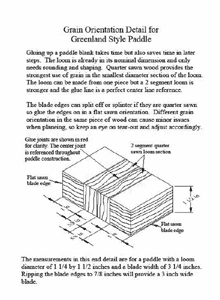 |
A GP can, of course, be made from a single 2x4 and all hand tools. You could even make a GP with a straight 4 inch diameter WRC log, a draw knife and a wet stone.
2. Rip the lumber into the sizes needed, cut the pieces to length and miter the shoulders of the blade edges. If you make a 2 piece loom, glue that up first. I like a 2 piece loom because it is stronger and glue seam makes a permanent "center line" which comes in very handy in all the following steps.
3. Mark up the blank with center lines, edge lines edge taper lines and end taper lines. Cut the taper on the blade faces. This can be done with: a hand plane, a power plane (my choice), a band saw (a little risky), or a jointer which produces the cleanest, most even face.
4. Redraw center lines on blade face and draw edge taper. Cut the edge taper with a hand plane. How you have the basic paddle shape, a hand plane and sand paper is all you need for here on out.
5. Redraw the center and edge lines on the edge taper you just cut and begin planing the final shape. Sanding will refine the final shape. Sand down to a 320 grit and try the paddle on the water to see if you want to make any changes right away. Final sanding, before finishing, should be with 400 grit.
6. You can leave the paddle unfinished but you will probably prefer to finish it. I like boiled linseed oil. It is easy to re-oil the paddle and the finish is not slippery. Don't use an oil finish if you think you will reshape the paddle as and an oiled paddle can be impossible to sand when you are finished shaping it.
After procuring the lumber I spend 10 to 14 hours making each paddle. I usually rip enough lumber for several paddles, then glue-up several blanks and then take my time making paddles one at a time. For me making GPs is a little like eating chips, I can't make just one.
Another article by me coming soon - How to Insert a Carbon Fiber Ferrule in a DIY Greenland Paddle.
|



